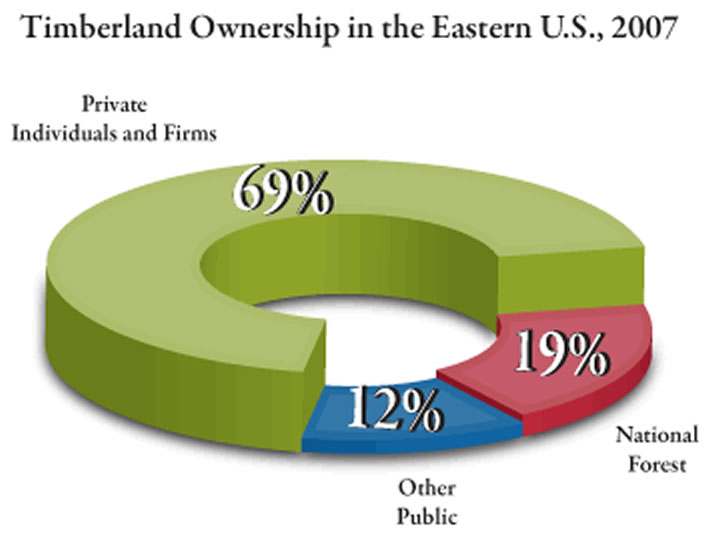Forest Management and Best Practices
American Hardwoods are a naturally sustainable and renewable material, but the proliferation and volume of forestland is heavily dependent on responsible forest management. Responsible practices ultimately determine the overall health of the forest and its future as a renewable resource.
What many may not realize is that the majority of American forestland is privately owned by families, individuals, corporations and other private groups who follow best practices to ensure forest health. According to the U.S. Forest Service National Woodland Owner Survey, of the 514 million acres of timberland in the U.S., Federal, State and other public owners account for 31 percent, while the remaining 69 percent is privately owned. To date, there is twice as much new wood growth as there is removal through harvesting under the collective stewardship of approximately 11 million private forest owners.

To ensure the continued growth of forests, these professional foresters practice the complex science of silviculture – the art and science of controlling the establishment, growth, composition, health and quality of forests to meet diverse needs and values. In conjunction with the landowners’ objectives, their hardwood forest management plans reflect the profession’s best practices for long-term sustainable timber production, while also addressing water quality, wildlife habitat, biodiversity, forest aesthetics and recreational opportunities.
In American Hardwood forestry, harvesting methods are dependent on the region. With single-tree selection, foresters choose individual trees for harvest, mark them for removal and a crew follows later to take down the marked trees. Logs are removed with the least disruption possible to the forest floor. This harvesting method, in practice for decades, improves growing conditions while enhancing the habitat for wildlife. Additionally, a typical harvest of the private landowners’ tract will occur only once, perhaps twice in the owner’s lifetime.
In a hardwood forest, trees compete for the water and sunlight that come through the forest canopy – the leafy “roof” over the forest floor. Single-tree selection reduces this competition. Carefully removing individual trees creates openings in the canopy, allowing more precipitation, sunlight and nutrients to reach the forest floor. No longer suppressed by larger trees, seedlings are free to grow vigorously and saplings sprout out of the tree stumps. A few years later, the forester returns to the site to remove the least desirable saplings, allowing the hardiest to grow.
The forest floor vegetation thrives also, ensuring a healthy environment for birds and other wildlife. The trees reproduce naturally and prolifically. Foresters work with the timeline that Nature dictates. With our help, forest regeneration happens and sustained supply and ongoing replenishment are the result. This renewing and eminently sustainable supply of American Hardwoods is because of those who own the forestland, their foresters and the responsible forest management practices they employ.

Emergent
A tree grows above the general level of the forest canopy. These trees are exposed to the strongest sun and winds.
Canopy
This level forms the roof of the forest with crowns of dominant trees and vegetation.
Understory
This level receives little light. Many of these trees tolerate shade and remain at this level; others grow and replace older, fallen trees.
Forest Floor
This lowest level is mad eup of tree seedlings, dead leaves, and needles, grasses, ferns, flowers, fungi and dacaying plants and logs.



